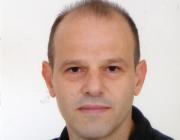Abstract:
Aim. This study examined the ventilatory responses and blood lactate concentration after a simulated synchronized swimming routine of athletes of two different age categories. Methods. Sixteen trained female synchronized swimmers, 8 competing at the comen category (age: 13.8±0.2 years) and 8 competing at the senior category (age: 22.6±0.9 years), performed a maximal 400 m swimming test and a simulated synchronized swimming routine. Oxygen uptake (V̇O2) of the tests was obtained by backward extrapolation of a monoexponential curve fitted to the postexercise oxygen uptake data. Results. There were no differences in V̇O2 at the end of the routine (37.4±2.7 vs 40.5±2 mL·kg -1·min-1, or 81.8±3.1% and 85.8±2.7% of V̇O2peak) and blood lactate (5.7*0.9 vs 4.5±0.4 mmol-L-1) between senior and comen synchronized swimmers. There was no difference in the half-time of V̇O2 decay (T1/2) between the athletes of the two categories, but T1/2 was significantly higher after the routine compared with the V̇O2peak test for both categories (senior: 45.2±5.9 vs 33.1±2.1 s, P<0.05, comen: 38.2±6 vs 27.4±8.2 s, P<0.05). The mean end-tidal pressure of CO2 during the second half of the recovery was higher after the routine than after the V̇O2peak test (37.2±1.4 vs 34.5±1.5 mmHg, P<0.05), possibly due to the prolonged periods of breath holding (55±4% of routine time). Breathing frequency was also high (30±2.2 breaths.min-1) at the later part of recovery after the routine. Conclusion. Cardiorespiratory and metabolic responses to a simulated synchronized swimming routine were similar in senior and comen athletes. The slower recovery of V̇O2 after the routine could be related to the elevated cost of ventilation, especially during the later stages of recovery, possibly as a result of the prolonged apnea.
Notes:
cited By 11
Website

